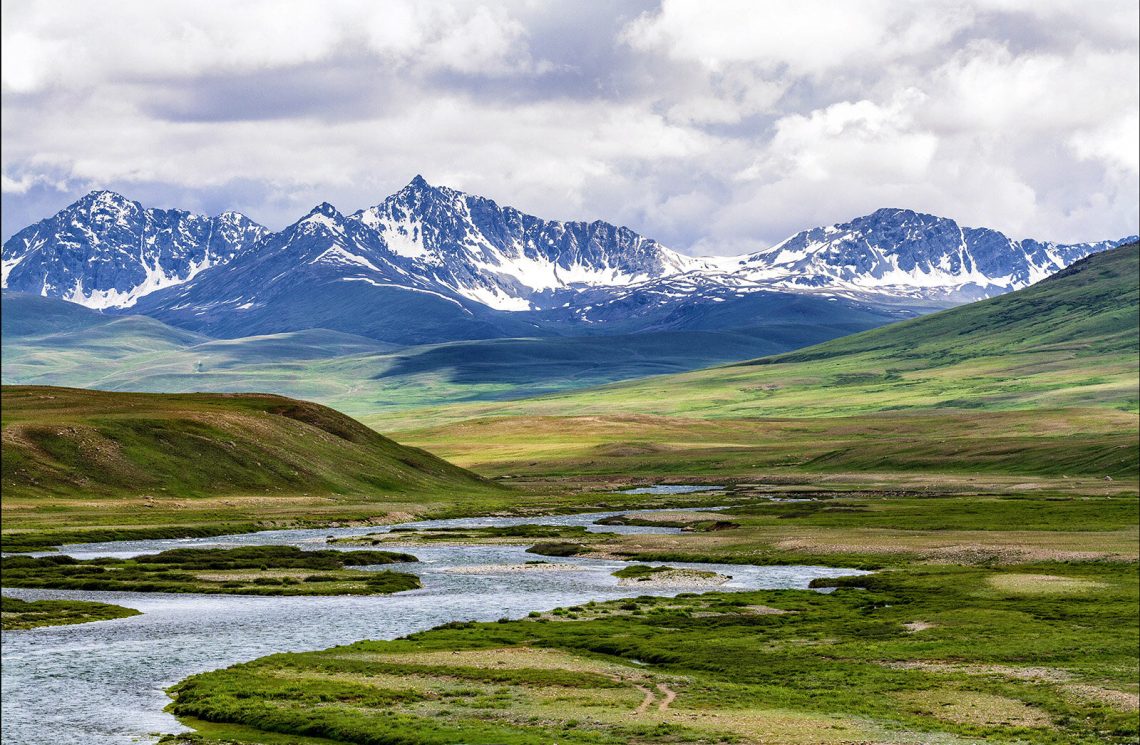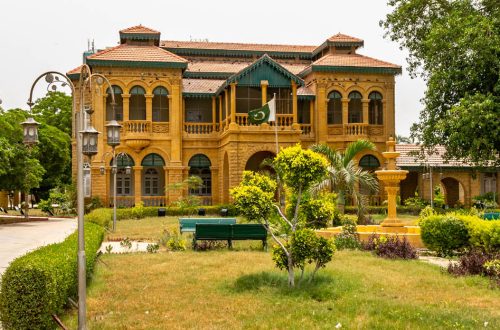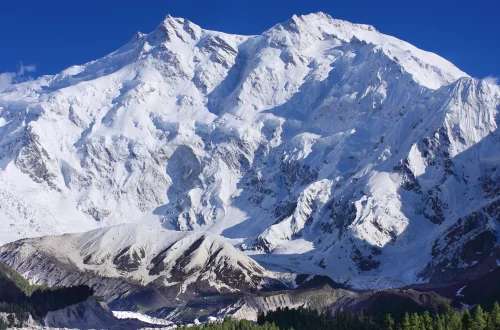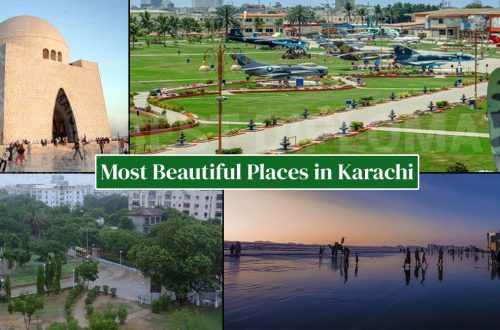Nestled high in the mountains of Pakistan, Deosai national park in Pakistan stands as a majestic realm of natural splendor and untouched wilderness. Known as the ‘Land of Giants’ due to its vast, open landscapes and the presence of the elusive Himalayan brown bear, this high-altitude plateau offers a serene escape into nature.
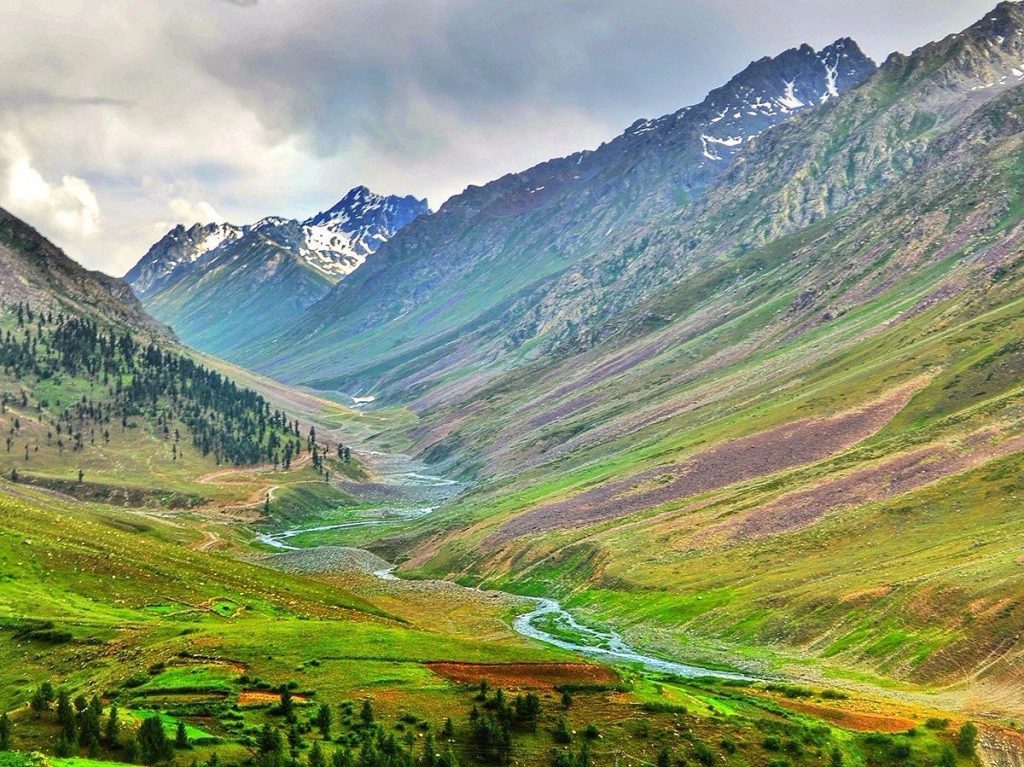
Accessible only during the summer months, Deosai invites adventurers and nature lovers to explore its extensive biodiversity, stunning Sheosar Lake, and vibrant wildflowers that blanket the ground. Whether you’re a trekker, a wildlife enthusiast, or simply someone seeking tranquility away from the bustling city life, Deosai National Park offers an unparalleled experience amidst one of the most picturesque settings in the world.
Welcome to the Land of Giants/Deosai National Park
Brace yourself for a landscape unlike any other in Pakistan. Visit Deosai National Park, aptly named “Land of the Giants” in the local tongue, isn’t just about towering mountains. Here, vast emerald plains stretch as far as the eye can see, meeting the snow-capped of the Himalayas in a breathtaking embrace.
Imagine crisp mountain air filling your lungs, the gentle hum of unseen wildlife a constant companion, and a sky painted with a dazzling array of stars at night. Deosai beckons the adventurer within, offering a chance to explore alpine meadows teeming with wildflowers, spot elusive brown bears, and experience the serenity of nature at its grandest.
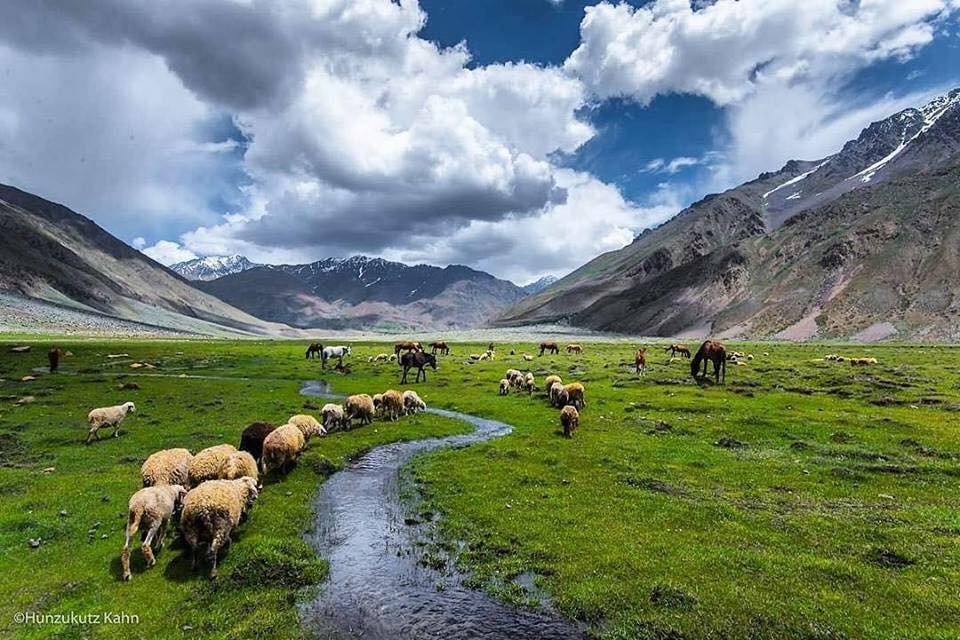
Are you ready to be humbled by the majesty of this unique and unforgettable national park?
Explore the Vast Open Landscapes
Visit Deosai National Park throws open its arms to those seeking adventure amidst endless horizons. Nicknamed “Land of the Giants,” Deosai isn’t just about towering peaks; it’s a land defined by sprawling majesty. Imagine yourself traversing vast emerald plains, the kind that seem to stretch on forever. As you explore, the air grows thinner and crisper, a refreshing contrast to the heat of the lowlands.
The landscape here isn’t monotonous; rolling hills dotted with vibrant wildflowers add a touch of whimsy to the grandeur. Deosai’s vastness isn’t just geographical; the big sky above, seemingly untamed and limitless, mirrors the expansive plains below.
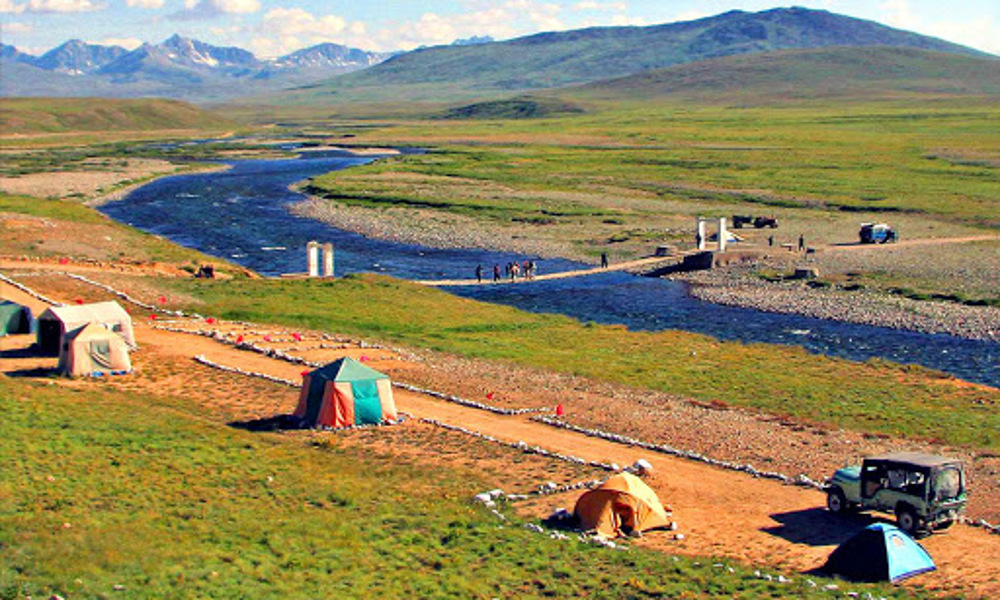
One can see by reaching Deosai National Park is a place where you can truly lose yourself in the embrace of nature, a trekker’s paradise offering unparalleled freedom and breathtaking scenery.
Encounter the Elusive Himalayan Brown Bear
One can see by reaching Deosai National Park isn’t just a landscape of staggering beauty; it’s a haven for unique wildlife, with the elusive Himalayan Brown Bear as its crown jewel. Imagine coming face-to-face (from a safe distance, of course) with this magnificent creature, the largest land predator in the region.
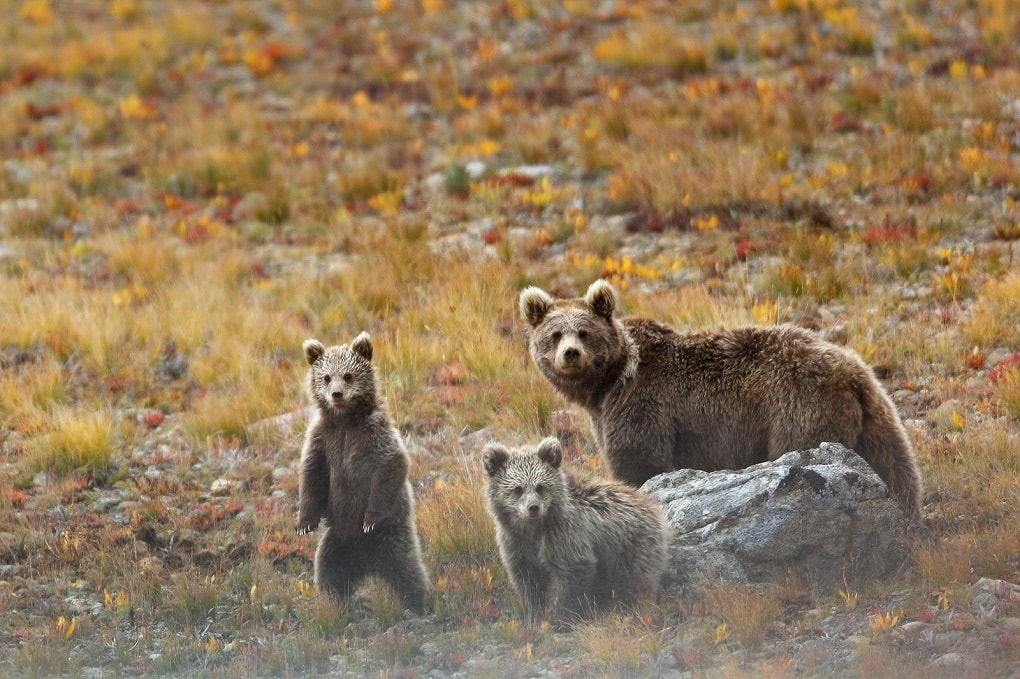
These with their thick fur and imposing stature, roam the alpine meadows and forests of Deosai, playing a vital role in maintaining the park’s ecological balance. Spotting a Himalayan Brown Bear in the wild is a rare privilege, an unforgettable encounter that leaves you with a deep appreciation for the park’s commitment to conservation.
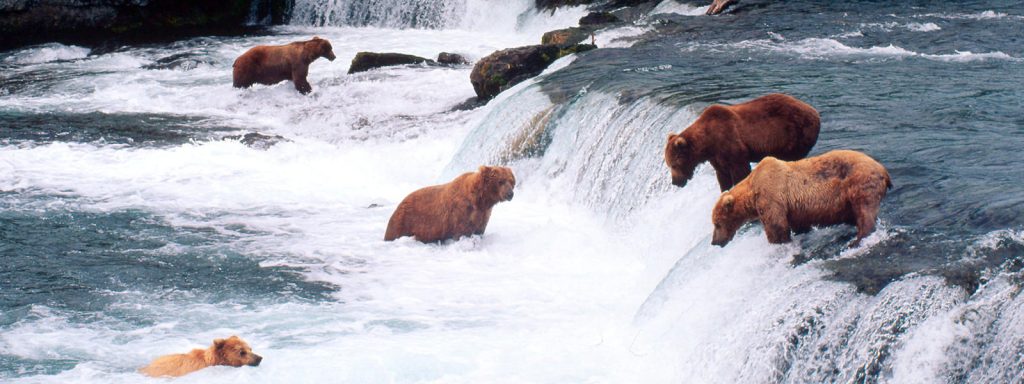
However, responsible wildlife watching is key. Respecting the bear’s habitat and maintaining a safe distance ensures a positive experience for both visitors and these remarkable creatures.
The Natural Splendor of Sheosar Lake
Deosai National Park boasts a treasure trove of natural wonders, and Sheosar Lake shines brightly amongst them. Nestled amidst the majestic mountains, this high-altitude lake reflects the surrounding peaks in its crystal-clear waters, creating a picture-perfect scene.
Imagine a painted with vibrant hues – the emerald green of the surrounding meadows contrasting with the snow-capped mountains and the deep blue of the lake itself. Sheosar Lake isn’t just visually stunning; it’s a vital source of life for the park’s ecosystem.
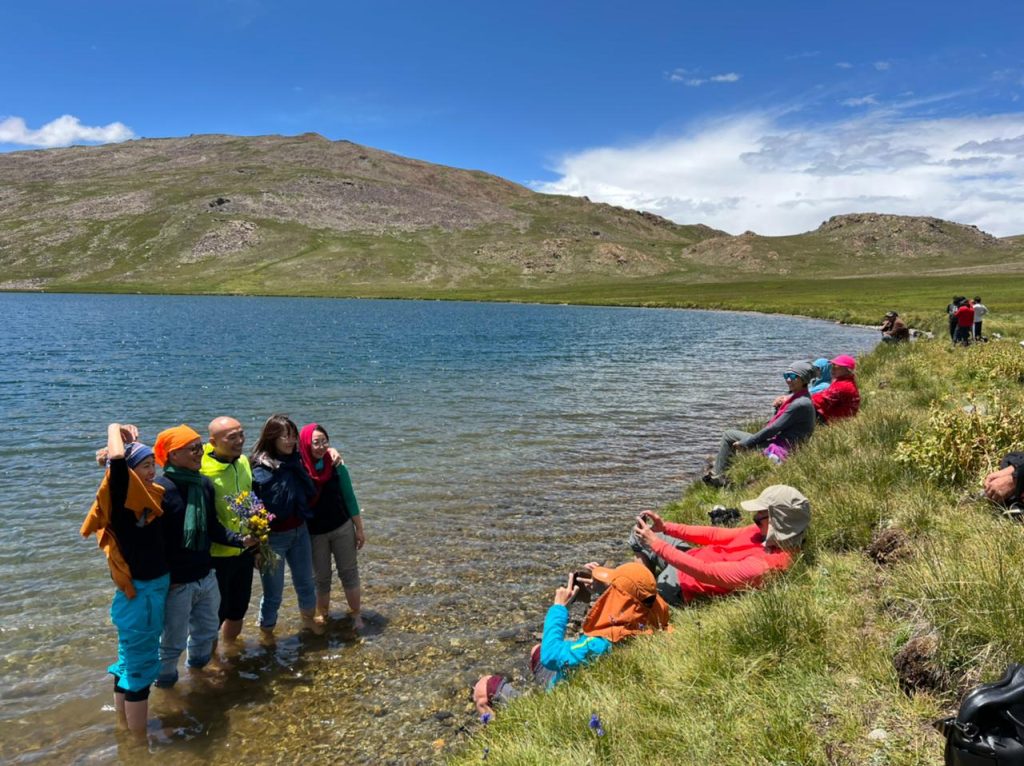
The lake supports a diverse range of birds, from geese and ducks to elusive raptors soaring overhead. A visit is a chance to reconnect with nature, to be mesmerized by its beauty, and to appreciate the delicate balance of the Deosai ecosystem.
Activities to Enjoy Around Sheosar Lake
Sheosar Lake, a jewel nestled within Deosai National Park, isn’t just a sight to behold; it’s a playground for outdoor enthusiasts. Imagine crisp mountain air invigorating your senses as you set out to explore the lake’s pristine surroundings. For the thrill-seeker, there’s jeep riding along the lake’s perimeter, offering stunning views and a chance to spot wildlife.
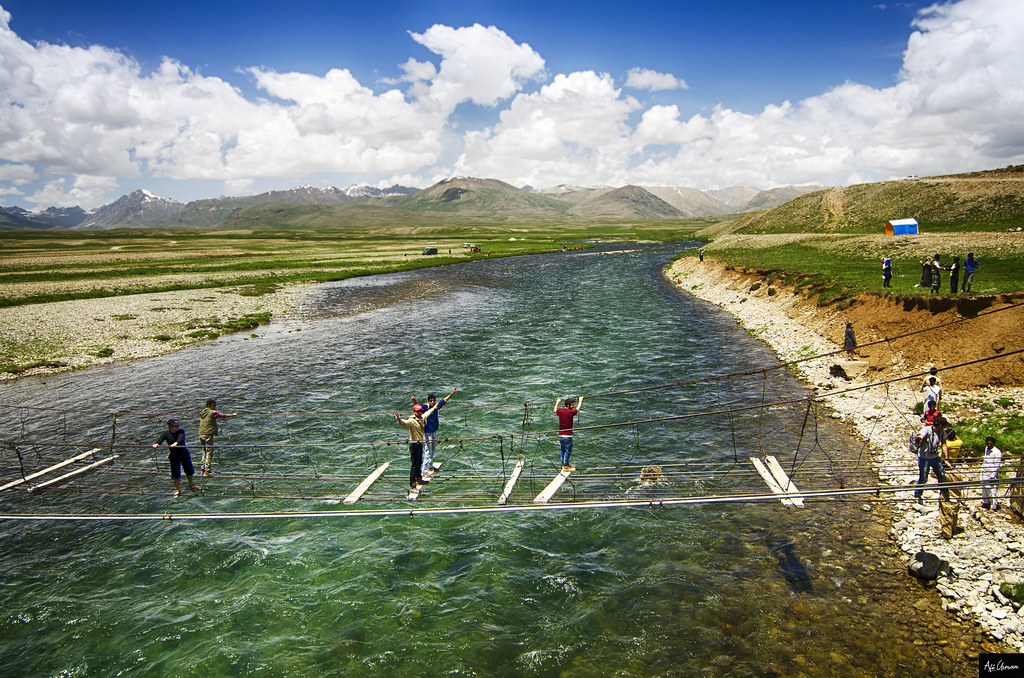
For the angler, the lake’s clear waters might hold a hidden surprise – a chance to catch brown trout, a prized catch for any hobbyist. If a slower pace is your preference, set up camp by the shore and soak in the tranquility. Stargazing here, away from light pollution, is a revelation, with a blanket of stars reflecting on the lake’s surface.
It caters to a variety of interests, making it an ideal destination for a memorable experience in Deosai National Park.
The Unique Flora and Fauna Near the Lake
Sheosar Lake isn’t just a scenic marvel within Deosai National Park; it’s a thriving ecosystem teeming with unique flora and fauna. The alpine meadows surrounding the lake burst with colorful wildflowers during the spring and summer months. Delicate gentians, vibrant primulas, and fragrant lilies carpet , transforming it into a visual feast.
These flowers not only add to the beauty of the region but also provide sustenance for a variety of insects, playing a vital role in the food chain. The skies above Sheosar Lake are no less alive. Keen observers might spot lammergeyers, majestic birds of prey with impressive wingspans, soaring on the thermals.
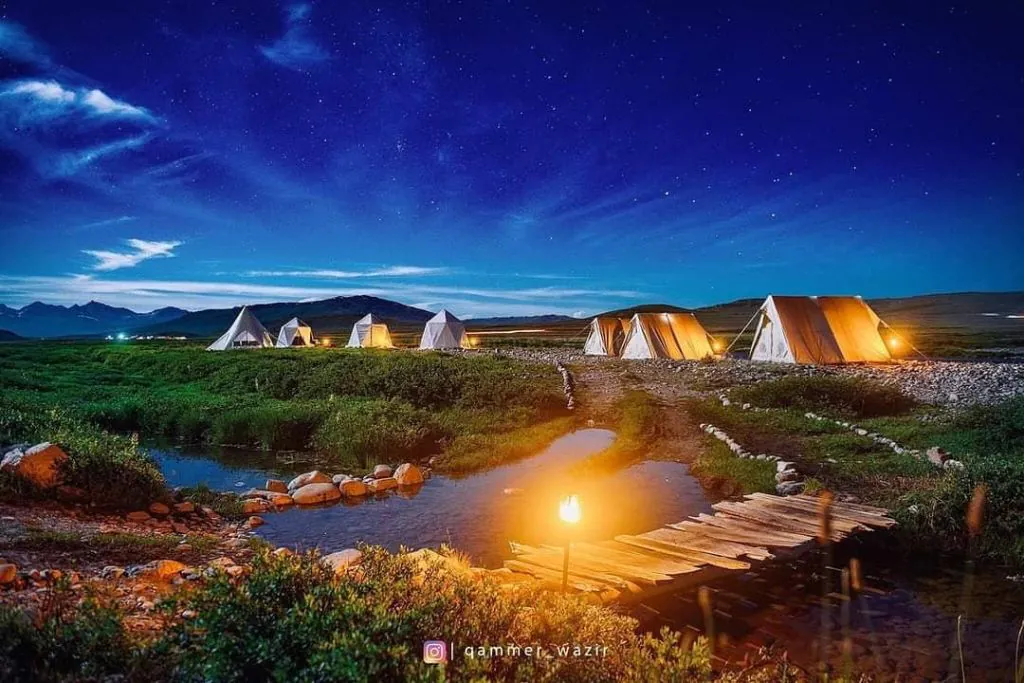
Golden marmots, adorable rodents well-adapted to the harsh climate, can often be seen basking on rocks near the it. The real stars of the show, however, are the elusive Himalayan Brown Bears. These solitary, with their thick fur and imposing stature, occasionally descend from the higher reaches of the park to feed on the lush vegetation near the it.
Sheosar serves as a vital source of water for these magnificent creatures, making it an important part of their habitat. A responsible visit to it allows visitors to witness this diverse tapestry of life firsthand, fostering an appreciation for the delicate balance of nature within Deosai National Park.
Trekking in Deosai
Deosai National Park isn’t for the faint of heart. For those seeking an adventure on foot, Deosai offers a network of trekking trails that cater to various experience levels. Imagine traversing vast emerald plains, the crisp mountain air filling your lungs with each step.
Trails like the Lake circuit provide moderate challenges, rewarding hikers with breathtaking views of the surrounding peaks and the glistening lake itself. For the seasoned trekker, routes like the Deosai Plains trek offer a true test of endurance. These high-altitude trails, with their constantly changing terrain, demand physical fitness and a sense of adventure.
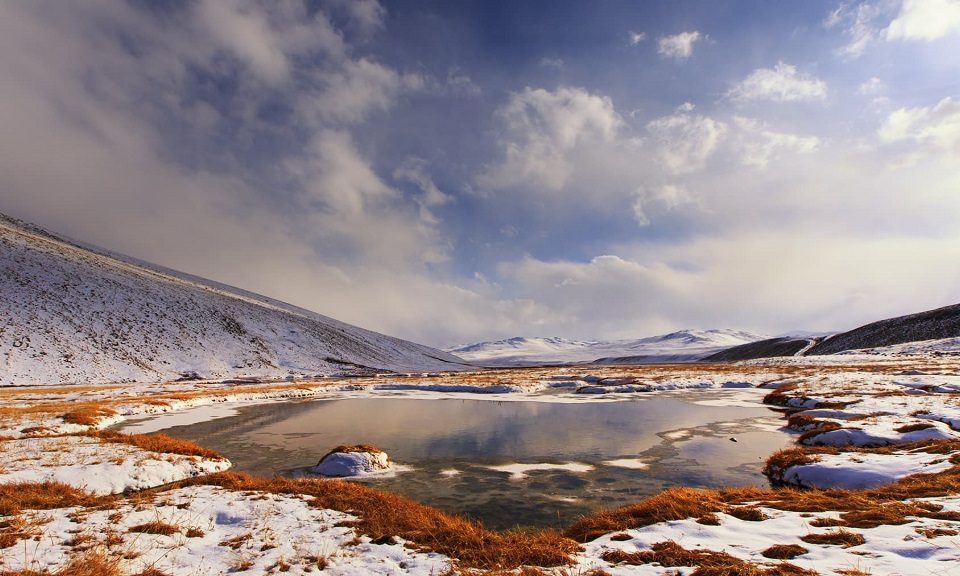
The reward? Unparalleled panoramic vistas, a chance to spot elusive wildlife, and the deep satisfaction of conquering a challenging. Deosai’s trekking trails are more than just paths; they’re gateways to a world of nature and adventure.
Routes and Tips for Beginners
Deosai National Park isn’t just about sprawling and towering peaks. It’s also a trekker’s paradise offering trails catering to various experience levels. While some routes require advanced skill and physical conditioning, there are plenty of options for beginners eager to explore the park’s beauty.
Here are some tips and routes for beginners venturing into Deosai National Park:
- Start Small:Choose shorter trails with manageable inclines, like Kacheri Lake. This scenic route offers a taste of Deosai’s meadows and wildlife without being too strenuous.
- Gradual Acclimatization: If you’re not used to high altitudes, spend a few days in Skardu to acclimatize before attempting.
- Hire a Guide: A knowledgeable guide can not only navigate the trails but also point out interesting flora and fauna and ensure your safety.
- Respect the Environment: Deosai is a fragile ecosystem. Stick to designated trails, avoid littering, and be mindful of your noise levels to minimize impact on the wildlife.
With careful planning and the right trails, beginners can have a memorable and enriching trekking experience in Deosai National Park.
Advanced Trekking Options for Seasoned Adventurers
Deosai National Park isn’t just for casual strollers; it offers a playground for seasoned trekkers seeking a true test of their skills. Imagine pushing your limits amidst breathtaking scenery, traversing high-altitude trails with ever-changing terrain. Deosai throws down the gauntlet with options like the Deosai Plains, a multi-day adventure that demands physical fitness and mental fortitude.
These challenging routes take you through vast, rolling, past glacial moraines, and over high path passes, all while battling the effects of thin air. The reward? Unparalleled panoramic vistas that stretch as far as the eye can see, a chance to encounter elusive wildlife like the Himalayan Brown Bear, and the immense satisfaction of conquering a formidable.
Deosai’s advanced trekking options are more than just trails; they’re journeys of self-discovery amidst the majestic of the “Land of Giants.”
Conservation Efforts in Deosai
Deosai National Park’s unique ecosystem faces growing threats. Recognizing this urgency, several initiatives are underway to protect this and its inhabitants.
A crucial step is habitat protection. Maintaining designated grazing areas for local livestock helps minimize pressure on the fragile alpine. Additionally, community outreach programs educate residents on sustainable practices and the importance of conserving Deosai’s biodiversity.
Anti-poaching patrols are another critical element. These vigilant teams work tirelessly to deter illegal hunting and ensure the safety of endangered species like the Himalayan Brown Bear. Research and monitoring programs play a vital role as well. By studying the park’s flora and fauna, scientists gain valuable insights that inform conservation strategies.
Sustainable tourism practices are also being promoted. Limiting visitor numbers on trekking trails and enforcing responsible waste management practices help minimize human impact on the environment. Deosai National Park serves as a beacon of hope, demonstrating how conservation efforts, community engagement, and responsible tourism can work together to safeguard this irreplaceable natural treasure.
Preserving the Wildlife
Deosai National Park is a haven for unique wildlife, but threats loom large. Conservation efforts are on high alert to protect this irreplaceable treasure.
Anti-poaching patrols are a critical line of defense. These dedicated teams work tirelessly to deter illegal hunting, ensuring the safety of endangered species like the majestic. Research and monitoring programs play a vital role too. By studying animal populations and habitat health, scientists gain insights that inform conservation strategies.
Community outreach is another weapon in the fight. Educating local residents on the importance of Deosai’s biodiversity fosters a sense of shared responsibility for the park’s well-being. Preserving Deosai’s wildlife isn’t just about protecting animals; it’s about safeguarding the ecological balance that sustains the entire park, ensuring future generations can experience its magic.
Sustainable Tourism Practices
Deosai National Park beckons adventure seekers, but responsible tourism is key to its survival. Here’s how visitors can tread lightly:
- Leave No Trace: Pack out all trash, minimizing waste left behind. Respect designated camping areas and avoid disturbing natural formations.
- Limit Your Impact: Choose smaller tour groups to reduce pressure on trails and wildlife habitats. Opt for eco-lodges that prioritize sustainability.
- Respect Wildlife: Observe animals from a safe distance and avoid loud noises. Refrain from feeding wildlife, as it disrupts their natural behavior.
- Support Conservation: Choose local guides who understand responsible practices. Consider contributing to conservation efforts that protect Deosai’s unique ecosystem.
By following these guidelines, tourists in Pakistan can experience Deosai’s majesty while ensuring it remains a haven for wildlife and future generations of explorers Gilgit Baltistan (Gilgit Baltistan Pakistan Gilgit Baltistan Pakistan). Remember, sustainable tourism is a two-way street – we enjoy the park, and we have a responsibility to protect it over world.
Deosai National Park, located between the Skardu, Astore, and Kharmang Districts in Gilgit-Baltistan, is a high-altitude plateau and the second highest in the world. This park is roughly the size of Singapore and is touched by the mighty Karakoram range. Visitors to Deosai National Park can expect a breathtaking journey from Skardu city, following the Indus River upstream and encountering the side stream, Bara Pani, along the way.
While Deosai in winter transforms into a snow-covered wonderland, the best time to visit is during the summer season, when the park bursts into a vibrant display of wildflowers. The area of Deosai is an important habitat for various wildlife, including the endangered, the elusive snow leopard, the Himalayan wolf, and the adorable Himalayan marmot.
The park is also home located in the Astore Valley. Interestingly, the flora of Deosai is influenced by both the Himalayas and the Karakoram, creating a unique ecological blend. Deosai National Park is a must-visit for any nature enthusiast seeking an unparalleled adventure in the heart of the world’s Northern Areas, nestled amidst the valleys of Baltistan and offering a glimpse of iconic peaks like Nanga Parbat.
Why is Deosai National Park famous?
It is recognized internationally as a crucial site for the protection and conservation of the critically endangered Himalayan brown bear. The Deosai plateau hosts the region’s only stable population of this species, playing a vital role in its continued survival.
Why Deosai is called Roof of the world?
Another fitting name for this plateau is the “Roof of the Earth,” as it is the world’s second-highest plateau, reaching approximately 4,114 meters (13,497 feet) above sea level. For about eight months of the year, Deosai is covered in snow.
What animals are in the Deosai?
The Deosai Plains are home to a diverse array of wildlife, including the Siberian ibex, snow leopard, Kashmir musk deer, Himalayan wolf, Himalayan marmot, and more than 124 species of resident and migratory birds.
Why is Deosai called the Land of Giants?
For a long time, this place was believed to be haunted by giants, giving rise to its name, ‘The Land of the Giants.’ The Deosai Plains are blanketed in snow for eight months of the year, but during the remaining four months, they transform into a paradise on earth, showcasing vibrant colors and lush greenery across a 3,000 square kilometer plateau.
